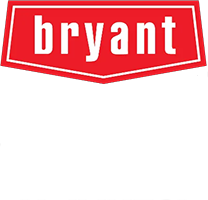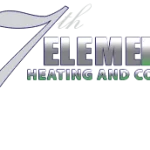Achieving a Healthier, More Comfortable Home Environment
As a homeowner in Eagle, you invest in creating a home that is not just comfortable, but also a safe and healthy sanctuary for your family. You control the temperature, the lighting, and the decor, but what about the quality of the air you breathe every day? Many of us overlook the vital role our heating and cooling system plays in our home’s indoor air quality (IAQ). This system does more than just heat and cool; it circulates every cubic foot of air your family breathes, along with any dust, allergens, or pollutants present.
Understanding the connection between your HVAC system and your home’s air is the first step toward creating a healthier living space. Especially in a unique climate like ours in the Treasure Valley, managing your indoor environment is key to year-round comfort and well-being.
Common Indoor Air Quality Challenges in Eagle Homes
The specific climate of Eagle, Idaho—with its dry air and distinct seasons—presents unique challenges for maintaining clean indoor air. Your home’s HVAC system can either contribute to these problems or be a powerful part of the solution.
The Problem of Dry Air
During our cold, dry winters, furnaces work hard to keep us warm. In the process, they can strip the air of its natural humidity. This overly dry air can lead to dry sinuses, itchy skin, increased static electricity, and even make your family more susceptible to colds and respiratory irritation. It can also cause damage to wood floors, furniture, and musical instruments.
Trapped Allergens and Pollutants
Modern, energy-efficient homes in Eagle are built to be tightly sealed. While this is great for keeping heated or cooled air inside, it also means that airborne contaminants have nowhere to go. Common indoor pollutants include:
- Dust and dust mites
- Pollen from local trees and sagebrush
- Pet dander
- Mold spores
- Volatile Organic Compounds (VOCs) from cleaning supplies, paint, and furniture
Without proper filtration and ventilation, your HVAC system can continuously recirculate these irritants throughout your home.
Uneven Temperatures and Stagnant Air
Do you have rooms that are always too hot or too cold? This isn’t just a comfort issue; it can also be a sign of poor air circulation. Stagnant air allows pollutants to concentrate in certain areas, leading to stuffy, uncomfortable spaces that feel less fresh and clean.
HVAC Solutions for a Healthier Home
The good news is that modern heating and cooling technology offers powerful solutions to combat these issues and dramatically improve your indoor air quality. Here are some of the most effective strategies for Eagle homeowners.
1. Foundational HVAC Maintenance
The single most important step for better air quality is consistent, professional maintenance of your HVAC system. A clean system runs more efficiently and is your first line of defense against airborne particles. During a tune-up, technicians clean coils, check components, and, most importantly, replace or clean air filters. A clogged filter can’t trap new particles and forces your system to work harder, circulating dusty air. Enrolling in an HVAC maintenance plan ensures this critical task is never forgotten.
2. Whole-House Humidifiers
To combat Idaho’s dry air, a whole-house humidifier is an invaluable addition. Unlike portable units that only manage one room, a ducted humidifier integrates directly with your furnace. It adds a controlled amount of moisture to the heated air before it circulates through your home, maintaining an optimal humidity level (typically 35-50%). This helps protect your family’s health, improve comfort, and preserve your home’s woodwork.
3. Advanced Air Filtration and Purification
Standard 1-inch filters are primarily designed to protect the HVAC equipment, not your lungs. Upgrading to a high-efficiency media air cleaner or an electronic air purifier can make a significant difference. These systems are installed within your ductwork and can capture a much higher percentage of microscopic particles, including allergens, viruses, and bacteria. This is a key component of a comprehensive HVAC system installation or repair aimed at improving health.
4. HVAC Zoning Systems
For homes with inconsistent temperatures and stuffy rooms, an HVAC zoning system provides customized comfort and better airflow. By using automated dampers in the ductwork controlled by separate thermostats, you can heat or cool different “zones” of your home independently. This not only saves energy but also improves air circulation, preventing the buildup of stagnant, polluted air in unused areas.
Ready to Improve Your Home’s Air Quality?
Your family’s health and comfort are too important to leave to chance. The expert team at 7th Element Heating and Cooling is here to help you find the right solutions for your Eagle home, from routine maintenance to advanced air quality systems.
Frequently Asked Questions
How often should I change my air filter?
For standard 1-inch filters, we recommend checking them monthly and replacing them at least every 90 days. Homes with pets, smokers, or allergy sufferers may need to change them more frequently (every 30-60 days). If you have a larger 4- or 5-inch media filter, it may only need changing every 6-12 months.
What are the signs of poor indoor air quality?
Common signs include persistent dust accumulation, musty odors, visible mold or mildew, and experiencing aggravated allergies, asthma, or respiratory irritation while at home. Unexplained headaches, fatigue, and frequent coughing or sneezing can also be indicators.
Is a whole-house humidifier better than a portable one?
For comprehensive, low-maintenance humidity control, a whole-house humidifier is far superior. It provides balanced humidity to your entire home automatically, requires less frequent maintenance than filling portable units, and operates more quietly and efficiently as part of your central heating and cooling system.
Can my older HVAC system be upgraded for better air quality?
Absolutely. Most existing HVAC systems can be retrofitted with advanced solutions like high-efficiency media air cleaners, UV air purifiers, and whole-house humidifiers. If your system is old or requires frequent heating repair, an assessment can determine if these upgrades are cost-effective or if a new, high-efficiency system would be a better long-term investment.
Glossary of Terms
HVAC: An acronym for Heating, Ventilation, and Air Conditioning. This refers to the entire system used to control the temperature, humidity, and purity of the air in an enclosed space.
IAQ (Indoor Air Quality): A term which refers to the air quality within and around buildings and structures, especially as it relates to the health and comfort of building occupants.
MERV (Minimum Efficiency Reporting Value): A rating system for air filters that measures how effectively they stop dust and other contaminants from passing through. The higher the MERV rating, the more particles the filter can capture.
VOCs (Volatile Organic Compounds): A group of chemicals found in many products we use to build and maintain our homes. Once these chemicals are in our homes, they are released or “off-gassed” into the indoor air we breathe. Examples include formaldehyde and benzene.

